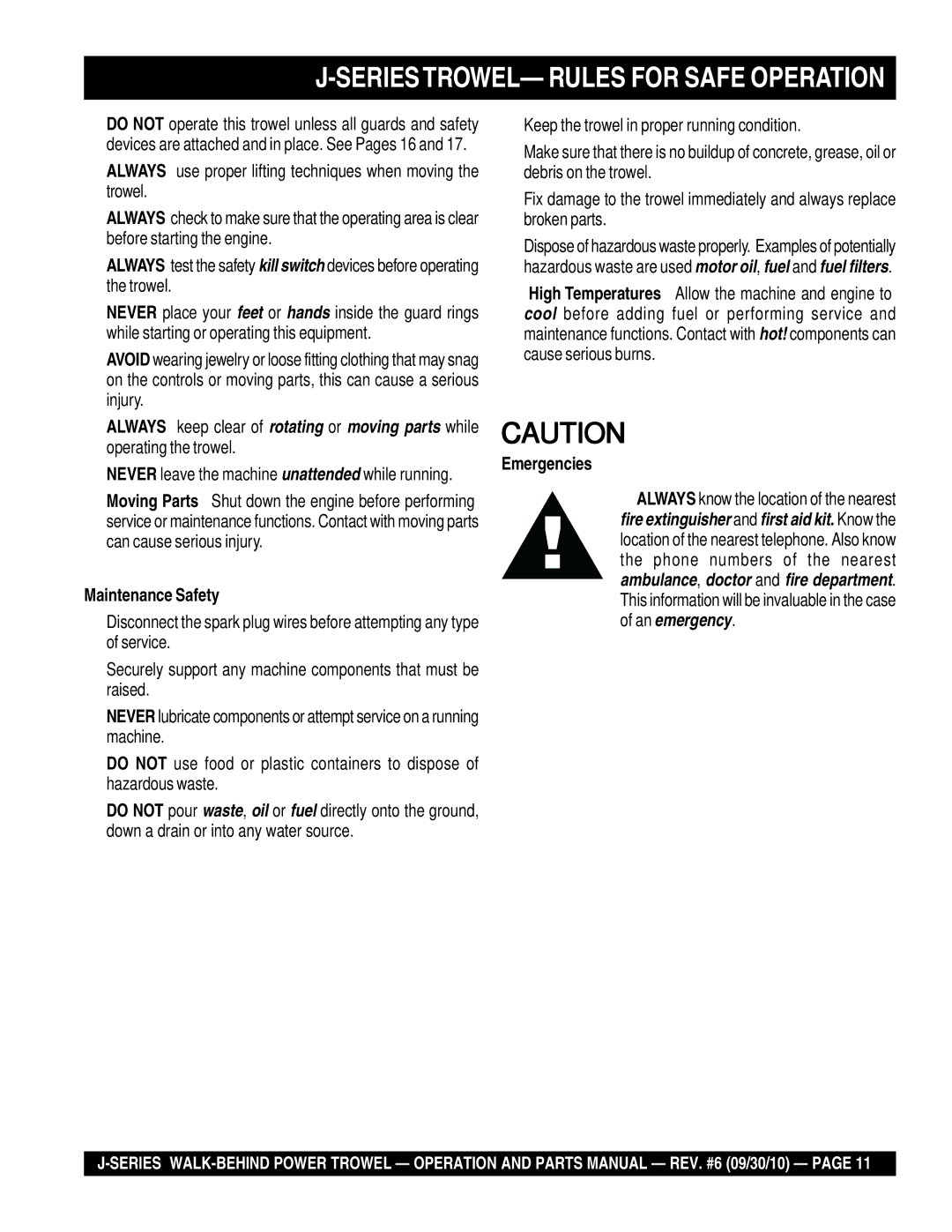
J-SERIESTROWEL— RULES FOR SAFE OPERATION
■DO NOT operate this trowel unless all guards and safety devices are attached and in place. See Pages 16 and 17.
■ALWAYS use proper lifting techniques when moving the trowel.
■ALWAYS check to make sure that the operating area is clear before starting the engine.
■ALWAYS test the safety kill switch devices before operating the trowel.
■NEVER place your feet or hands inside the guard rings while starting or operating this equipment.
■AVOID wearing jewelry or loose fitting clothing that may snag on the controls or moving parts, this can cause a serious injury.
■ALWAYS keep clear of rotating or moving parts while operating the trowel.
■NEVER leave the machine unattended while running.
■Moving Parts – Shut down the engine before performing service or maintenance functions. Contact with moving parts can cause serious injury.
Maintenance Safety
■Disconnect the spark plug wires before attempting any type of service.
■Securely support any machine components that must be raised.
■NEVER lubricate components or attempt service on a running machine.
■DO NOT use food or plastic containers to dispose of hazardous waste.
■DO NOT pour waste, oil or fuel directly onto the ground, down a drain or into any water source.
■Keep the trowel in proper running condition.
■Make sure that there is no buildup of concrete, grease, oil or debris on the trowel.
■Fix damage to the trowel immediately and always replace broken parts.
■Dispose of hazardous waste properly. Examples of potentially hazardous waste are used motor oil, fuel and fuel filters.
■High Temperatures – Allow the machine and engine to cool before adding fuel or performing service and maintenance functions. Contact with hot! components can cause serious burns.
CAUTION
Emergencies
■ALWAYS know the location of the nearest fire extinguisher and first aid kit. Know the location of the nearest telephone. Also know the phone numbers of the nearest ambulance, doctor and fire department. This information will be invaluable in the case of an emergency.
